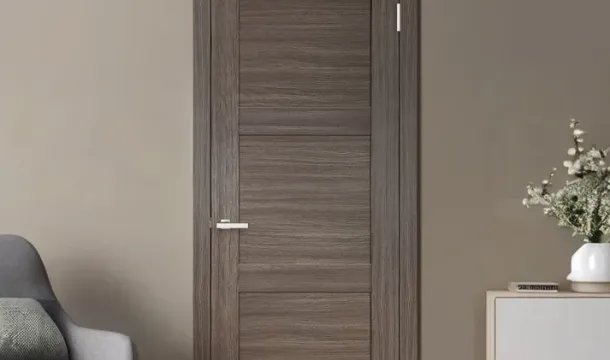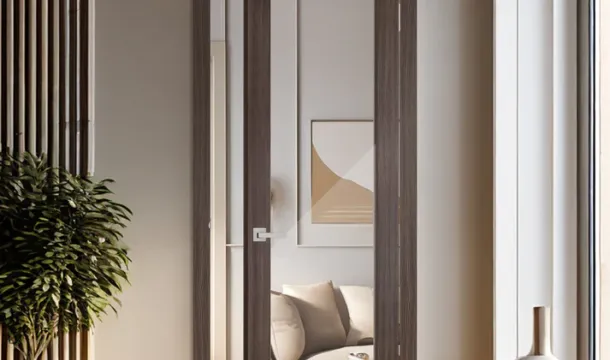Signs It's Time to Upgrade Your Door Hardware Instead of Replacing
Popular Articles
Worn-out locks, loose handles, and squeaky hinges indicate that upgrading your door hardware is a smarter investment than replacing the entire door. If your door still fits well within its frame but the functionality feels compromised, new hardware can restore smooth operation and enhance security without the cost and hassle of a full replacement.
Look for visible corrosion on metal components or difficulty turning knobs and deadbolts; these are clear indicators that your current hardware has surpassed its effective lifespan. Modern options offer improved durability and advanced locking mechanisms designed to meet Canadian building standards and climate challenges.
Replacing outdated hardware also provides an opportunity to update your interior design. Selecting finishes like matte black, brushed nickel, or aged bronze can refresh the style of your doors instantly, aligning them with current trends while maintaining structural integrity.
Identifying Wear Without Full Replacement
Check for visible corrosion or pitting on metal components such as hinges, latch plates, and strike boxes. Surface rust weakens structural integrity but can often be treated with rust removers and protective coatings instead of full hardware replacement.
Listen for squeaks or grinding noises when operating the door. These usually indicate dried or failing lubrication in moving parts. Applying a high-quality lubricant to hinges and lock mechanisms frequently restores smooth function without swapping out entire units.
Inspect screws and mounting points for loosening or stripped threads. Tightening or replacing individual fasteners can stabilize hardware that feels loose, preventing costly replacements triggered by instability.
Assessing Functional Degradation
Test the latch engagement and deadbolt throw for consistency. If the bolt doesn't fully extend or retract smoothly, internal wear might be causing friction. Cleaning the mechanism and adjusting alignment often extends hardware life significantly.
Evaluate handle rotation resistance. Excessive stiffness suggests worn bushings or springs inside the handle assembly that can typically be repaired or replaced independently rather than replacing all door hardware.
Surface Damage That Doesn't Compromise Function
If finish wearsuch as scratches, tarnish, or fadingis your main concern but mechanical operation remains intact, consider refinishing options. Polishing brass, repainting metal surfaces, or applying new plating provides an aesthetic refresh without changing functional parts.
Replacing small components like strike plates, faceplates, or escutcheons is a cost-effective way to address localized damage while preserving the majority of existing hardware that still performs reliably.
When Security Features Are Outdated
Replace locks and deadbolts if they do not meet current ANSI/BHMA standards, specifically grades 1 or 2 for residential security. Older hardware often lacks resistance to lock picking, bumping, or forced entry. Installing reinforced strike plates with longer screws (at least 3 inches) can significantly enhance doorframe strength without full replacement.
Check if the existing door hardware includes smart security options such as keyless entry, tamper alarms, or remote access capabilities. Traditional mechanical locks without these features may no longer provide sufficient control over access, especially in multi-user households or rental properties.
Inspect latch mechanisms for compatibility with modern door sensors used in home security systems. Outdated hardware may fail to trigger alarms properly, reducing overall protection. Upgrading to hardware that integrates seamlessly with alarm and monitoring setups improves both safety and convenience.
Hardware corrosion or rust on locking components can impair function and compromise security. Instead of replacing entire doors, focus on upgrading to corrosion-resistant materials like stainless steel or brass alloys designed for harsher climates common in many parts of Canada.
Evaluate whether your current door hardware offers adequate privacy features for interior spaces such as bedrooms or home offices. Privacy locks with simple yet reliable mechanisms help maintain personal boundaries without sacrificing ease of emergency access when necessary.
Improving Functionality Without Door Swap
Upgrade door hardware components like hinges, handles, and locks to enhance performance without changing the door itself. Replacing standard hinges with ball-bearing or self-closing models reduces noise and ensures smooth operation. For doors that stick or don't close properly, adjusting or installing weatherstripping improves seal and insulation.
Switching to lever-style handles can increase accessibility, especially in homes with children or elderly residents. Modern locksets with smart featuressuch as keyless entry or remote accessadd convenience while maintaining existing door frames. Installing a door closer enhances fire safety and prevents slamming, extending the lifespan of both the door and frame.
For sliding or pocket doors, upgrading rollers and tracks eliminates jamming and uneven movement. Adding bumpers or soft-close mechanisms protects walls and minimizes wear on hardware. These targeted improvements often require minimal tools and time but significantly boost daily usability without the cost or disruption of a full door replacement.
Popular Articles

Soundproofing Interior Doors: Which Options Are Best for Your Home?

Choosing the Perfect Interior Doors for Your Canadian Home
